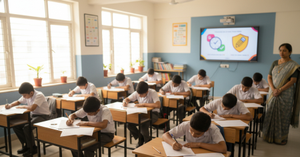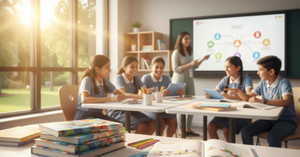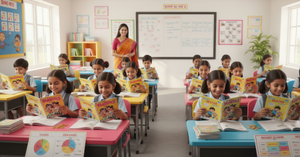If you're a parent in Delhi right now, you've probably noticed your child coughing more than usual or complaining about burning eyes. The air quality after Diwali has become so bad that the government had to step in with emergency measures.
What's Happening Right Now?
The Delhi government just announced that schools need to conduct classes in hybrid mode for students up to Class 5. This means your child can either attend school physically or join classes online, whichever works better for your family.
Why the sudden change? Delhi's Air Quality Index (AQI) jumped from 362 on November 10 to a dangerous 425 by the next morning. To put this in perspective, anything above 400 is considered "severe" and affects healthy people too, not just those with existing health problems.
The government activated something called GRAP-3 (Graded Response Action Plan Stage III), which is basically their emergency playbook for when air quality gets really bad. Along with school changes, they've banned construction work, restricted certain vehicles, and asked everyone to do their part in reducing pollution.
How Are Schools Actually Managing This?
Private Schools: Most private schools switched to online mode pretty smoothly. They already have the systems in place, the infrastructure is there, and they can share online class links with parents without much trouble.
But here's what many principals are noticing: most students are still showing up to school. The reason? Parents feel that since schools are located in Delhi itself, their children are breathing the same polluted air whether they're at home or in school. So they're choosing to send them anyway.
Government Schools: This is where the real challenge shows up. Many students in government schools don't have access to smartphones or laptops for online classes. Even when families do own a smartphone, parents often take it with them to work.
Government school principals are dealing with a tough reality as their students simply don't have the means to join online classes. As a workaround, some schools are sharing homework through WhatsApp groups, but it's not the same as attending a proper class.
The result? Students are still showing up to school with burning eyes and dry coughs because they don't have another option.
The Digital Divide Nobody Wants to Talk About
This pollution crisis has exposed something we've been ignoring since the pandemic: not every student has equal access to online learning. Every winter, when pollution spikes, this gap becomes painfully obvious.
Aprajita Gautam, president of the Delhi Parents' Association, points out that this isn't just about younger kids. "Pollution impacts everyone, irrespective of their age." Parents of children with asthma or breathing problems are particularly worried because the current rules only apply to students up to Class 5.
What Does This Mean for Your Child's Health?
Let's be clear about what "severe" air quality actually means. According to the Central Pollution Control Board, air in this category "affects healthy people and seriously impacts those with existing diseases."
Your child breathing this air is like standing in a room full of smoke for hours. Short-term effects include:
- Burning, watery eyes
- Dry cough and throat irritation
- Difficulty breathing
- Fatigue and headaches
For children with asthma or other respiratory conditions, the risks are much higher.
What Can You Do as a Parent?
If your school is offering hybrid mode, consider keeping your child home if possible—especially if they have any breathing issues. But we also understand that's not an option for everyone.
Some parents are calling for changes to the academic calendar itself. Why not give students planned leave during peak pollution season instead of these emergency measures every year?
Until that happens, here's what you can do:
- Keep windows closed during peak pollution hours (early morning and late evening)
- Use air purifiers if possible
- Make sure your child wears a good-quality mask when outdoors
- Watch for symptoms like a persistent cough or breathing difficulty
Conclusion
The government's restrictions under GRAP-3 include banning construction work, limiting certain vehicles, and strengthening public transport. These are necessary steps, but they're reactive, not proactive.
The air quality is expected to improve to "very poor" (which tells you how bad things are when that's considered an improvement), but this cycle repeats every year.
Schools are doing their best with hybrid learning, but the solution can't just be switching between online and offline classes every time pollution spikes. We need better infrastructure for online learning in government schools, and frankly, we need to address the pollution problem at its root.








Be the first one to comment on this story.